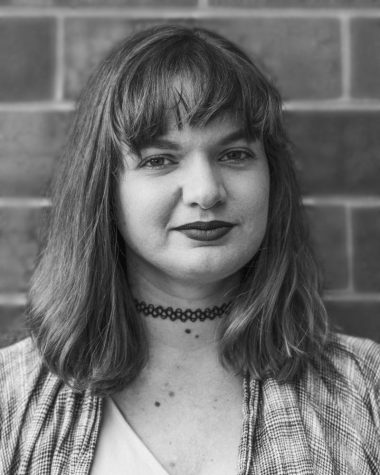Rascasuelos Take Tradition to a New Level
The passionate group of Argentines who constitute the tango ensemble Rascasuelos spoke to us last week.
November 2, 2016
In the world of bands that are making waves, few are as fantastic or as gregarious as the Argentinian tango band Rascasuelos. The entire ensemble consists of seven musicians and four dancers who perform together in a raucous show of passion, artistry and absolute dedication to the genre. The musicians and dancers alike are steeped in the historic culture of the genre, and in the latest culminating recognition of their talent, the group has been booked to perform at the renowned Carnegie Hall on Wednesday, Nov. 2.
A few days ago, WSN was able to sit down with a few members of the group in a beautiful apartment overlooking Central Park, but even the bold rainbow abstract paintings on the walls couldn’t compare to the vivacity the group effused in their interview. They spoke on the culture and passion of tango, and what it means to represent both Argentina and tango while performing at Carnegie. (This interview has been translated from Spanish and edited for brevity.)
WSN: How long have you been performing together as a group?
Limon Garcia: Nine years.
Patricio ‘Tripa’ Bonfiglio: Officially, maybe eight. We recorded the first album — that was six years ago. And then, as you know, the preparation was a year before. Seven years ago, officially. There were some meetings, but [they were] informal.
WSN: How did you meet each other?
PB: Between ourselves… a few of us had played with each other, a few had participated in a group together, a few had worked small gigs together, and eventually we introduced each other to the others. We had played together with our first violinist… We really met on stage. Not all together, but each with a few — we were all connected. When it was proposed that we form this project, we thought about introducing each other … and then we formed. People who we had already known introduced us — directors, that sort of thing.
LG: There had been a conceptual idea that we wanted to work with initially. Based on that, we worked forward.
PB: We couldn’t just use any pianist, any violinist … we worked under an aesthetic agreement on our sound. And so we formed our team. And it changed — not all of us remained.
LG: Only five of the original members still remain.
PB: We are five originals. The violinist and the cellist are the hardest… this is the fourth violinist, the third cello…
WSN: What does it mean to you all to play at Carnegie Hall?
PB: For us, it means representing Argentina at an emblematic theater in New York. We feel like we’re representing the culture from one city to another. It’s not just an honor for a single person or a single artist. No, we’re generals of a culture of a generation, and it’s a responsibility to represent the biggest masters of tango in the past and of the culture of tango in the future.
Because what we’re basically doing, musically, is respecting the tradition of tango. We’re not representing the style of tango in the 40’s or the 50’s or the 70’s or the 30’s. Like the greatest masters say, “each person makes new music in their moment.” The tango of the 30’s was a new style then, because before then, tango didn’t sound like that. Carlos [Gardel, a tango singer] did the same thing 10 years later, and this sound was his own music. We’re continuing this line. We’re performing our tango, our new tango.
I know we have a tangent in time — we represent what happened, and what’s happening, and what’s coming in the future. We are playing in an historic moment, because… There isn’t a person in this world that doesn’t know the name of [Carnegie Hall], that doesn’t know what you’re talking about. We’re trying to bring, once again, tango to this theater. For several years it was dead, because musicians were just repeating established formats… For a long time, there wasn’t growth in the genre, in the aesthetic, and there wasn’t growth in American tango. So it’s an honor. For us, an honor.
LG: It’s also opening a door so that many other artists in Argentina, who are taking different paths and creating different [styles] of tango, and also for the rest who are playing… it’s opening a door for them, so that they can also pass through this door … For a long time, tango was a closed thing — there was a sort of gate in front of our music. And well, what we are doing is a small birth. To be able to begin to do other things within in the genre. But fundamentally, we’re respecting the masters who taught us how to do things.
The concept is really interesting. When I’m with this band, I try to get engaged with the concept — to follow tradition is to make new stuff. That’s tradition, to make new stuff. If not, it doesn’t become tradition!
Email Hailey Nuthals at [email protected].
























































































































































